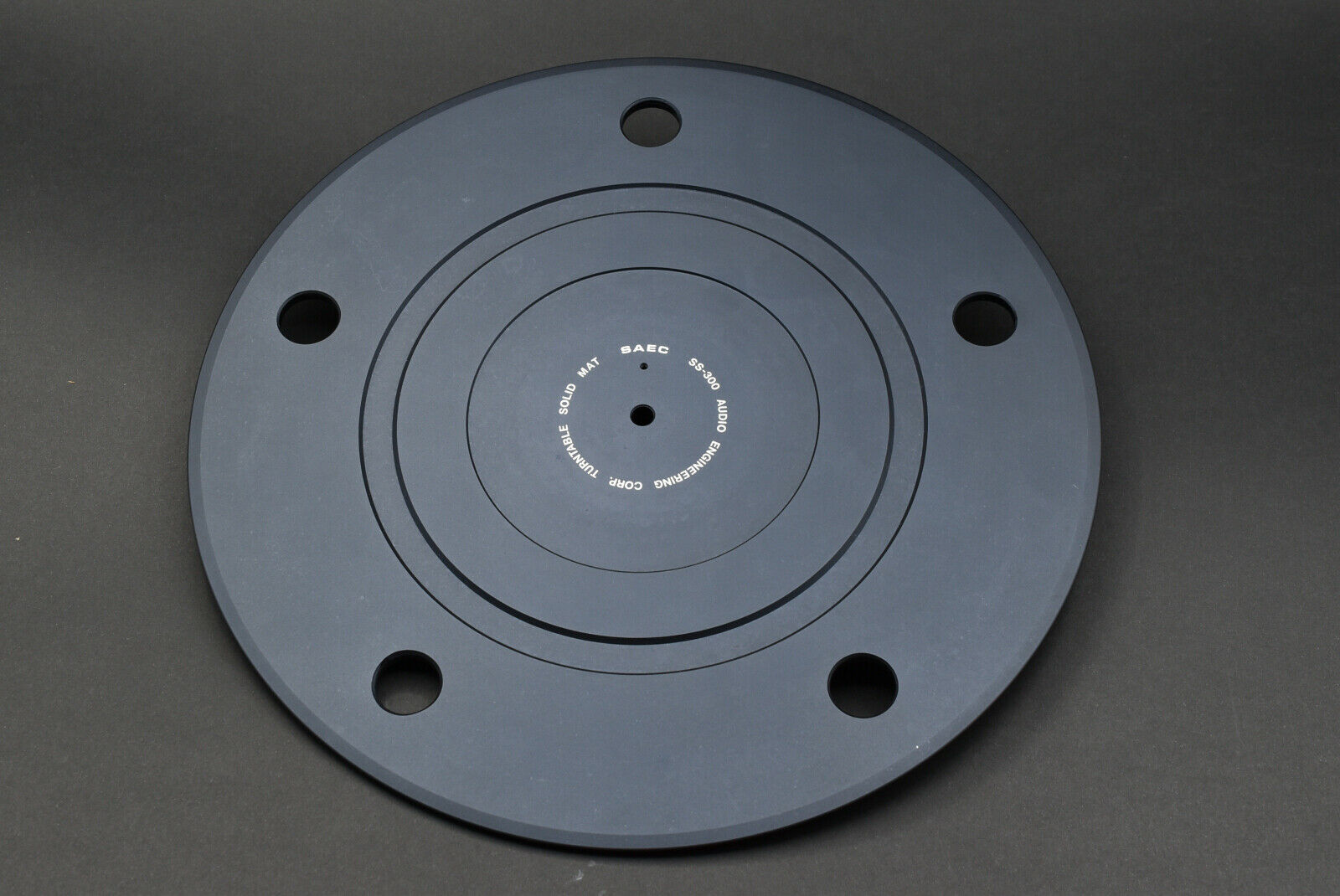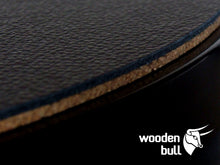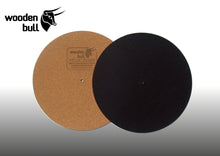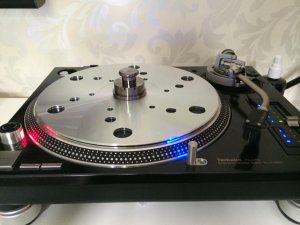Platematte
- Trådstarter pang
- Startdato
Uten tvil den beste innenfor rimelig budsjett: Achromat FunkPlatter.
Jeg ser også etter noe slikt. Vet du hvor man kan kjøpe denne?Uten tvil den beste innenfor rimelig budsjett: Achromat FunkPlatter.
Tenkte på noe lignende selv.
Finnes et bra utvalg her: Turntable Mats
Finnes et bra utvalg her: Turntable Mats
Jeg bruker PA1 fra bfly på en VPI Traveler med stort hell, merker en generell forbedring. Koster ca 150 inklusive frakt til Norge.
Analog Accessories
Analog Accessories
Det er nok ikke noe universelt svar på hva som er den "beste" platematten. Litt avhengig av type spiller vil man kunne oppleve noe ulikt resultat - og matching/egen preferanse spiller også inn.
En del nye spillere i dag er forøvrig beregnet for å ikke bruke matte i det hele tatt, men platen skal legges rett på tallerken.
Bytter man til matte med annen tykkelse enn det armen (VTA) er satt opp for, så er det viktig å huske på at denne må korrigeres.
En del nye spillere i dag er forøvrig beregnet for å ikke bruke matte i det hele tatt, men platen skal legges rett på tallerken.
Bytter man til matte med annen tykkelse enn det armen (VTA) er satt opp for, så er det viktig å huske på at denne må korrigeres.
Har lagt ut denne tidligere men det er mye bra lesestoff her
Different Materials At first hearing a rubber mat will allow more detail, but you may discover after a while that these are make believe refinements. Peaks in the frequency curve should be avoided at all times. A relatively hard mat is the best option: acrylic (Goldmund type), hard rubber (the Technics SP-10mk2 type). The choice of mat should always be made in relation to the turntable itself and the arm and cartridge combination. Soft rubber, fluffy felt and very soft sorbothane are providing just fantasy. It is like eating cake with too much cream. After a while you get sick of it. If the sound is not detailed enough you should check if there is a mis match of cartridge, arm, capacitance of the phono cable, and pre-amplifier. In that case check this page first: 
Not long ago I bought a mat which was relatively thin (only 3 mm) and made of a rather brittle material. Though it looked somewhat like acrylic on first inspection, it emphasized the mid-high frequency band and did not provide a good mid band. The difference between this quasi audiophile mat (it was advertized as being audiophile) and the mat of the Technics SP-10 Mk2 for example, could be heard when there were a few ticks. These lacked the mid frequencies when the brittle mat covered the platter. The audiophile mat weighed only 242 gr. while the Technics mat was 4 mm thick, weighed 414 gr. The acrylic mat I currently use is machined out of a 5 mm thick sheet. That mat weighs 402 gr. The 4 mm corian mat was 426 gr. There is abviously a relation of weight, thicknes, and good sound. History In the early days of the record era the gramophones which played the 78 RPM shellac discs generally had their platters covered with a velvet fabric in nice green, black, red, brown or blue. After the LP had arrived the rubber mat was introduced. At first it was just a very thin rubber sheet with a circular pattern to cover the platter. Rubber was used because it was a practical material. It kept the grooves relatively free of dust, could be removed and easily cleaned whereas velvet could contain dust and leave this behind in the micro grooves of the vinyl. In time thicker rubber mats were used and audiophiles and manufacturers discovered the differences in sound depending on the sort of rubber and the difference related to a good contact between record and mat. Technics, Thorens, Nakamichi In the nineteen seventies designers of turntables started to listen even more carefully to their products and many not only came up with a heavier platter but also with specific turntable mats. In Japan Technics used a not too thick mat on their SL-series direct drive machines. On the SP-10Mk2 a thicker 
From Japan were also the specifically shaped mats from Nakamichi similar to the mat offered by Haraoka. These mats are made of hard and heavy rubber which contains a relatively high percentage of metal. And there was also a thin mat from red copper, specifically shaped for maximum support and close contact with the record. But such a mat was easily bent. Initially the mats on Thorens turntables were not too good. The later versions of TD-160 and TD-126, at the end of the nineteen seventies, had mats which supported the record in a better way and on top of it they were made of a harder rubber which contributed to a far more dynamic and precise performance. Spectra, Audioref, Dumpa In France the Spectra turntable mat was introduced. It consisted of 3 layers of

The Spectra was superseded by the Audioref (marketed by Jean-Claude Fourrière in the 1970's in France) and a later edition which he devised was the Dumpa mat. It was made of harder rubber and made it less tricky to remove the record. It also had more neutral properties which translated in less coloration. Measurements showed that rumble was less prominent as in conventional mats. 
Not only the rumble spectrum was many dB lower but now the curve also had a regular pattern in the lower register which is the fundament for a faithful reproduction of the many harmonics. (Note: One could say that Jean Claude Fourrière knew what he was doing. He was the designer of the incredible loudspeaker systems named Audio Reference 800 which could boast on four 38 cm Audax woofers (from the PR 38 series) per channel and yet the sound was as light and fast that the most refined details and subtleties in the recording were heard. Later he designed the Toltèque cold plasma loudspeakers which would promise an even more transparent sound devoid of matter.) Mission, Ariston, Linn, Hiraoka, Oracle In the UK Farad Azima of Mission Electronics proposed a mat made of sorbothane which was said to have excellent damping properties. (Mission used sorbothane also in the 3 feet of their turntable. But there it was apparent that the isolation from rack or other support was not sufficient.) The properties gave an airy sound with a clear upper midband but the attack still could be improved, specifically in the mid band. Sorbothane was/is also used by Audioquest. Mission's mat prompted Ariston of England to produce a mat with a more amorphous structure and different damping properties. 
When Linn originally started the production of the Linn Sondek LP12 a rubber mat was used for several years. It was a mat with a striped profile. Later Linn discovered that the LP12 would project a more tasteful sound and image with a felt mat. The first felt mat was relatively thin and soft and as soon the accentuation of the high frequencies was discovered, a thicker and "harder" felt mat was available for the Sondek. From Japan came the Hiraoka mat, type SE 22 M, similar to the Nakamichi mat. This is a very heavy and thick mat consisting of rubber with a high content of metal. The mat promised to give a better damping of the record and should provide a better stereo image, a cleaner sound, and at the time could improve speed constancy of the platter. 
Another interesting design was the mat which adorned the Oracle turntable. It was used in conjunction with a clamp that had to be screwed on the threaded spindle. The shape of the mat was slightly convex and the record was clamped down in order to make a firm contact between the surface of the record and the mat. This led to a more precise signal and an improved transient response. Mikro Seiki Copper Mat
This mat could be covered with an additional mat of felt and this would result in more or less the same sound pattern as was given by the Linn LP12 turntable: detailed high frequencies, smooth and fast mid section and transparent bass. The CU-180 could also be used with no additional mat and in that case it would not only add weight to the existing platter, but also would give a clear, no nonsense transient without any phase shift. In that case more attention would have to be paid to the choice of cartridge and arm combination and choice of phono cable. The CU-180 was marketed for several years and was a gadget which was appreciated by many a high end audio adept.
Goldmund, Acrylic, Marantz, Nagaoka Glass Mat, Corian When the Goldmund engineers designed their turntables (Studio, Studietto, Reference) an acrylic platter was used in conjunction with a specially designed clamp which consisted of different materials. They also made a separate mat plus clamp available for audiophiles who wanted to imitate more or less the 'Goldmund sound quality' with their existing turntables. Also imitation Goldmund mats with clamps where made by hobbyists and a few other manufacturers. They did not succeed in obtaining the same effect for one hundred percent because the materials used by Goldmund (specifically in the clamp) could not be imitated entirely. Nevertheless these imitations were not too bad. Important is that an acrylic mat is glued to the turntable's platter using a very thin double sided adhesive sheet in order to obtain the clean sound. The drawback of course is that a glued mat can not be removed in case a new turntable is bought, hence many audiophiles glue the mat only at three points with the extremely thin double sided tape. Best DimensionsHere I give the measurements for having a simple and a more sophisticated acrylic mat turned by a machinist in a workshop. The maximum diameter should not exceed 290 mm and should be preferably less: 285 mm. 
Marantz Glas Mat Marantz proposed a mat of glass on their TT 4000 top of the line turntable. Nagaoka marketed a separate glass mat, the Crystal. Rega gave their turntables a glass platter to be covered with felt in order to counteract 'the sound of glass' (which also can be heard in designer audio racks with glass shelves). With the revival of the long playing record other mats have been proposed in the last decade: cork and suede leather, a.o. It seems however that many people are trying to reinvent the wheel as if all these years from 1950 on of designing, of research and development (and of marketing) were useless. Especially the praises for carton, a thin sheet of foam or bituminous sheet should not be believed. Firmness of the material, good damping characteristics (not collecting the energy but transmitting the energy so it can gradually die out) and the optimum diameter for support of the entire LP (and not just the groove guard and the center) make a good mat. Although I have some reservations about a mat turned out of a sheet of corian, the performance of that material not only depends on the aluminum content which may vary, but also on the turntable, the phono cable. Corian opens the upper mid band somewhat to the detriment of the lowerd mid frequencies. Corian also can round the extreme top of the audio band somewhat and is good in suppressing some distortion in that region. That is our experience. While with a Goldmund or imitation Goldmund mat you can be assured of a neat performance on many a turntable, thr outcome of corian varies. The properties of corian are not always as desired because the percentages of aluminum varies (large or small flakes, more or less flakes). Well Tempered, Fulton, Sota, Townshend There are more mats (according to Greg Stewart from Minneapolis) which were maybe not so prominent because they were not available separately or did not get a vast proliferation. Well-Tempered Labs used for a time on their Well-Tempered Table a moderately-soft damping mat like the Audioquest/Mission and the Oracle, but much thinner. The idea was to damp while increasing firmness of bass and impact which was lost in the thicker sorbothane mats. The Well-Tempered mat was fairly effective, but didn't catch on and could not establish itself due to the introduction of acrylic platters and acrylic mats. So Well-Tempered started to use a better-damped acrylic-like platter. Another thick flexible mat that appeared about the time of the Dumpa/Spectra was the one by Robert Fulton. Then there are the acrylic varieties. Sota had an acrylic mat on top of a flexible Sorbothane-like material to try and get the best of both. Nowadays, you see a lot of turntables with an acrylic platter, omitting a specific mat. These can work pretty well, but unless they are damped like the Goldmund platter in the 1980's, they can be lively and procure a less well balanced sound. There was also the Townshend Elite Rock with the plaster-filled aluminum-shelled platter with a flexible, but rigid plastic mat on top which was quite effective, but the plaster had a tendency to separate from the aluminum. The Warren Gehl mat (if you have ever heard of it) is a favorite of certain audiophiles. It is a multi-layer, heavy plastic composite that does a great job of damping the record on the topside and damping the platter on the bottom side while providing a rigid surface for good impact, slam, and bass. The mat was extremely expensive and rarely seen, but is by far the most detailed, accurate, neutral, and revealing mat. What is the Right Combination? Of course there is a relation between your turntable and the mat, and also between the nature of the arm (plus cartridge) and the mat. And there is a relation between your loudspeaker system and the turntable. But then we are talking about subtle differencies. Because of the very fine structure of acrylic, the sound and its characteristic is accordingly. The sound is somewhat rounded in the midband and the result can give the impression of a slightly retracted midband (if compared to most ordinary rubber mats). Acrylic provides but less straightforwardness depending on the clamp or turntable weight which is used. In the top the frequencies are refined. Because of the well controlled lower register and the lower-mids, transients are less exuberant but precise. Acrylic does not accentuate distortion as some rubber mats do. So that is a good thing too. Acrylic mats sound natural because of the correct phase (the harmonics are established at the same time as the fundamentals), especially when using a screw-on clamp. Glass accentuates the top frequencies but lacks in transparency and structure of the low and mid-low registers. I would never advise the use of glass because of its amorphous nature. There are various kinds of rubber which all sound differently. Rubber is in general more blatant, but has speed and can add to realism, and often sounds also more 'ordinary', less sophisticated. The Spectra mat has a more airy sound but seems to shift everything one octave higher in the spectrum. The Mission sorbothane sounds also a bit lighter with less firmness and weight in the lower-mid band, but is also speedier (which is good for transients) than acrylic mats and most rubber mats. The Ariston mat was in my view not in accordance with the harmonics of the music and sounds a bit amorphous. The Best Turntable Mat The best mat delivers sound with good transients, an even frequency characteristic, deep bass which is well controlled, and gives a good reproduction of the mid band in conjunction with clear and detailed high frequencies. All of course with the least distortion. The best mat provides the best signal reading in order to give a sound reproduction as if the music is performed live. Do not forget that. By all means do dare to change an acrylic mat for a rubber one if it gives more realism in your system. Or leave the felt mat on the shelf and change it for a rubber one. In other words: do not follow trends but find the best solution for your sound system. But above all: follow your own ears and not your eyes! And if you do that you probably will opt for the acrylic mat. A commercial one or the poor man's home made acrylic mat. |
Spørs hvilken spiller trådstarter har og hva budsjettet er. Men sjøl sverger jeg til Oyaide MJ-12 med Oyaide BR-One under, som er en 1mm tynn myk gummimatte (føles som silikon).
Achromat var et stort hopp lydmessig fra filtmatte og gummimatte. Oyaide MJ-12 var et like stort hopp fra Achromat
Achromat var et stort hopp lydmessig fra filtmatte og gummimatte. Oyaide MJ-12 var et like stort hopp fra Achromat
Vedlegg
-
70 KB Visninger: 2.079
Spillern er en Thorens TD 2015 kjøpt ny av meg. Den er utstyrt med ei filtmatte ala rimelige Project og Rega. Har aldri spilt med den , vinyl rett på tallerken.
Det er sikkert en grunn for at den selges med, kanskje rett og beskyttelse. Har prøvd to andre matter av gummi, men de er tykkere. Kan stille armhøyden ,men
har ikke prøvd. Det er noe visuelt med ei matte , tenkte jeg skulle prøve ei tynn ei. Pris har ikke så mye å si.
Det er sikkert en grunn for at den selges med, kanskje rett og beskyttelse. Har prøvd to andre matter av gummi, men de er tykkere. Kan stille armhøyden ,men
har ikke prøvd. Det er noe visuelt med ei matte , tenkte jeg skulle prøve ei tynn ei. Pris har ikke så mye å si.
Leste litt om VPI Classic på nettet.
Det anbefales klart å ikke bruke noen matter.
Well Tempered Classic skal heller ikke ha noe matte.
Like greit å droppe det for min del.
Det anbefales klart å ikke bruke noen matter.
Well Tempered Classic skal heller ikke ha noe matte.
Like greit å droppe det for min del.
Oppgraderte med Auditorium 23 black til min spiller, og det var i grunn et betydelig løft i lydbildet både i topp og dynamikk. Bestilte fra Auditorium Turntable Mats
etter litt lesing på Auditorium 23 LP mat | w h e t s t o n e . a u d i o
etter litt lesing på Auditorium 23 LP mat | w h e t s t o n e . a u d i o
- Ble medlem
- 22.11.2017
- Innlegg
- 39
- Antall liker
- 12
Hva er dette for merke?
Srm/Tech
 duet audio har disse
duet audio har disse
Liker denne.

^ Den der er vel noe tilsvarende Achromat fra Funk?
https://thefunkfirm.co.uk/upgrades/achromat-and-apm-9042903
https://thefunkfirm.co.uk/upgrades/achromat-and-apm-9042903
- Ble medlem
- 01.08.2008
- Innlegg
- 246
- Antall liker
- 17
Kan du beskrive hva du liker med denne (og gjerne hva du sammenlikner med)?Liker denne.
Vis vedlegget 1024843
Sammenlignet med korkmatte fra HK.
1) den er sort, står i stil til resten av spilleren.
2) den veier mer, så den blir ikke med når jeg fjerner vinylplaten.
3) hos meg har jeg mindre statisk elektrisitet med denne.
1) den er sort, står i stil til resten av spilleren.
2) den veier mer, så den blir ikke med når jeg fjerner vinylplaten.
3) hos meg har jeg mindre statisk elektrisitet med denne.
Soundeckfjøla er vel laminert aluminium mens achromat kjører skum og plast.^ Den der er vel noe tilsvarende Achromat fra Funk?
https://thefunkfirm.co.uk/upgrades/achromat-and-apm-9042903
Soundeck gjør etter hva jeg har erfart en betydelig bedre jobb med å dempe vibrasjoner.
SAEC SS-300Hva er dette for merke?

SAEC SS-300 Alloy Turntable Mat Sheet | Samurai Audio
Rare SAEC SAEC SS-300 Alloy Turntable Mat Sheet vintage HiFi accessory from Japan. Perfect for collectors and enthusiasts. Worldwide shipping available – shop n
 samuraiaudio.com
samuraiaudio.com
- Ble medlem
- 22.11.2017
- Innlegg
- 39
- Antall liker
- 12
Takker for svaret
Jeg bruker denne fra Wooden Bull, 2 mm. gummi mettet kork + 1 mm. okse lær, platen ligger meget stabilt og mindre statisk elektrisitet.
Jeg har også en Funk Firm Achromat 5 mm. men foretrekker så absolutt den fra Wooden Bull. Ikke er den dyr heller.



Jeg har også en Funk Firm Achromat 5 mm. men foretrekker så absolutt den fra Wooden Bull. Ikke er den dyr heller.


Hvor har du kjøpt matta fra Wooden Bull?
Jeg bruker disse på 2 av spillerne mine : Oyaide MJ-12 med Oyaide BR-One under. Liker de bedre enn Acromat som jeg har prøvd på disse 2.
På en VPI bruker jeg ingen matte. Funker meget bra.
På en VPI bruker jeg ingen matte. Funker meget bra.
hvor tykk blir den komboen? (finner ikke info på MJ-12, BR-One er 1 mm ser jeg)Jeg bruker disse på 2 av spillerne mine : Oyaide MJ-12 med Oyaide BR-One under. Liker de bedre enn Acromat som jeg har prøvd på disse 2.
På en VPI bruker jeg ingen matte. Funker meget bra.
Oyaide BR-12 er 5 mm. Det stemmer at BR-One er 1 mm. Meget bra kombo dette.hvor tykk blir den komboen? (finner ikke info på MJ-12, BR-One er 1 mm ser jeg)
Takk!Oyaide BR-12 er 5 mm. Det stemmer at BR-One er 1 mm. Meget bra kombo dette.
Kjøpte den direkte fra Wooden Bull, Irland 50 Euro inkl,frakt + moms ca. 750-800 kr. totalt.Hvor har du kjøpt matta fra Wooden Bull?
Hvor kjøpte du disse? Nettbutikk eller i fysisk butikk?Jeg bruker disse på 2 av spillerne mine : Oyaide MJ-12 med Oyaide BR-One under. Liker de bedre enn Acromat som jeg har prøvd på disse 2.
På en VPI bruker jeg ingen matte. Funker meget bra.








